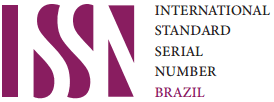Use of drugs by individuals with severe mental disorders: perception of the user and their family members
DOI:
https://doi.org/10.25118/2763-9037.2018.v8.311Keywords:
Comorbidity, family, substance-related disordersAbstract
Among psychiatric comorbidities, the association of severe mental disorders (SMD) with substancerelated disorders (SRD) stands out. The prevalence of this comorbidity varies from 20 to 42%. The use of drugs presents a bidirectional relationship with SMD, impairing the evolution of both conditions. In this study, we assessed the perception of people presenting with comorbid SRD and SMD, admitted to the psychiatric ward of a general hospital, and that of their family members, with regard to the impact of drug use on the patient’s disorder. SRD was assessed using the Alcohol, Smoking and Substance Involvement Screening Test as well as the Mini International Neuropsychiatric Interview. The perception of users and family members was assessed using the following triggering questions: “Do you think your drug use has an impact on your psychiatric problem?”; “On a scale from 0 to 10, what is the impact of drug use on your mental disorder?”; and “Can you explain your answer?” A total of 110 patients and their family members were assessed; 31% currently presented addiction on some drug (tobacco excluded). The most frequent diagnoses were schizophrenia and bipolar affective disorder. Among drug users, the mean score assigned to the impact of drug use on the mental disorder was 4.5, compared to 7.8 among family members. For dependents, self-medicati on, the fact of belonging to a group and diffi culti es related to maintaining selfcontrol justi fi ed the use of drugs; for family members, the negati ve impact and fear of the future emerged as concerns. The diff erent percepti ons between pati ents and family members indicates the need to adapt approach strategies.
Downloads
Metrics
References
Zaleski M, Laranjeira RR, Marques ACPR, Ratto L, Romano M, Alves HNP, et al. Diretrizes da associação brasileira de estudos do álcool e outras drogas (ABEAD) para o diagnóstico e tratamento de comorbidades psiquiátricas e dependência de álcool e outras substâncias. Rev Bras Psiquiatr. 2006;28:42-8.
Kessler RC, Berglund P, Demler O, Jin R, Merikangas KR, Walters EE. Lifeti me prevalence and age-ofonset distributi ons of DSM-IV disorders in the nati onal comorbidity survey replicati on. Arch Gen Psychiatry. 2005;62:593-602.
Watkins TR, Lewellen A, Barret M. Issues and problems with dual diagnosis. In: Dual diagnosis: an integrated approach to treatment. Thousand Oaks: Sage; 2001. p. 11-24.
Steadman HJ, Mulvey EP, Monahan J, Robbins PC, Appelbaum PS, Grisso T, et al. Violence by people discharged from acute psychiatric inpati ents faciliti es and by others in the same neighborhoods. Arch Gen Psychiatry. 1998;55:393-401.
Torrens M, Marti n-Santos R, Samet S. Importance of clinical diagnoses for comorbidity studies in substance use disorders. Neurotox Res. 2006;10:253-61.
Ratt o LRC. Prevalência da comorbidade entre transtornos mentais graves e transtornos devido ao uso de substâncias psicoativas em São Paulo, Brasil [dissertação]. São Paulo: Universidade de São Paulo; 2000.
Menezes PR, Johnson S, Thornicroft G, Marshall J, Prosser D, Bebbington P, et al. Drug and alcohol problems among individuals with severe mental illnesses in south London. Br J Psychiatry. 1996;168:612-9.
Yesavage J, Zarcone V. History of drug abuse and dangerous behaviour in inpati ent schizophrenics. J Clin Psychiatry. 1993;44:259-61.
Bartels SJ, Drake RE. Depressive symptoms in schizophrenia: comprehensive diff erencial diagnoses. Compr Psychiatry. 1988;29:467-83.
Clark RE, Drake RE. Expenditures oft ime and money by families of people with severe mental illness and substance use disorders. Community Ment Health J. 1994;30:145-63.
Capistrano FC, Ferreira ACZ, Maft um MA, Kalinke LP, Mantovani MF. Impacto social do uso abusivo de drogas para dependentes químicos registrados em prontuários. Cogitare Enferm. 2013;18:468-74.
Mazuca KPP, Sardinha LS. Dependência do álcool: a importância da família no tratamento e na prevenção da recaída. Bol Inic Cient Psicol. 2000;1:23-31.
Bezerra VC, Linhares ACB. A família, o adolescente e o uso de drogas. Cad Juv Saude Desenv. 1999;1:184-97.
Hospital de Clínicas. Especialidades [Internet]. [cited 2015 Aug 2]. www.hc.unicamp.br/?q=node/58
Silva IFS, De Micheli D, Lacerda RB, Lacerda LA, Formigoni MLO. Validação da versão brasileira do teste de triagem do envolvimento com álcool, cigarro e outras substâncias (ASSIST). Rev Assoc Med Bras. 2004;50:199-206.
Sheehan DV, Lecrubier Y, Harnett -Sheehan K, Janavs J, Weiller E, Keskiner A, et al. The validity of the Mini Internati onal Neuropsychiatric Interview (MINI) according to the SCID-P and its reliability. Eur Psychiatry. 1997;12:232-41.
Carlini EA, Galduróz JCF, Noto AR, Fonseca AM, Carlini CM, Oliveira LG, et al. II levantamento domiciliar sobre uso de drogas psicotrópicas no Brasil: estudo envolvendo as 108 maiores cidades do país - 2005. Brasília/São Paulo: Secretaria Nacional Anti drogas/Centro Brasileiro de Informações sobre Drogas Psicotrópicas, Universidade Federal de São Paulo; 2007.
Di Doi WE. The use of psychoacti ve substances and psychiatric comorbidity: an epidemiological study in the Hospital Dr. Emilio Vidal Abal - Córdoba. Córdoba: Univerti ty Córdoba; 2012.
Ratt o L, Cordeiro D. Principais comorbidades psiquiátricas na dependência química. In: Figlie NB, Bordin S, Laranjeira R. Aconselhamento em dependência química. São Paulo: Roca; 2010, p. 199-217.
Pacek LR, Mauro PM, Marti ns SS. Perceived risk of regular cannabis use in the United States from 2002 to 2012: diff erences by sex, age, and race/ethnicity. Drug Alcohol Depend. 2015;149:232-44.
Hasin DS, Sarvet AL, Cerdá M, Keyes KM, Stohl M, Galea S, et al. US adult illicit cannabis use, cannabis use disorder, and medical marijuana laws: 1991-1992 to 2012-2013. JAMA Psychiatry. 2017;74:579-88.
Calabria B, Swift W, Slade T, Hall W, Copeland J. The perceived health risks of cannabis use in an Australian household survey. Drug Alcohol Rev. 2012;31:809-12.
Darke S, Torok M. Atti tudes of regular injecti ng drug users towards the legal status of the major illicit drugs. Drug Alcohol Rev. 2013;32:483-8.
Wilkinson ST, van Schalkwyk GI, Davidson L, D’Souza DC. The formati on of marijuana risk percepti on in a populati on of substance abusing pati ents. Psychiatr Q. 2016;87:177-87.
Degenhardt L, Hall W, Lynskey M. Alcohol, cannabis and tobacco use among Australians: a comparison of their associati ons with other drug use and use disorders, aff ecti ve and anxiety disorders, and psychosis. Addicti on. 2001;96:1603-14.
Lader M. Addicti on and the pharmacology of cannabis: implicati ons for medicine and the law.Med Sci Law. 2009;49:1-17.
Sewell RA, Skosnik P, Garcia-Sosa I, Ranganathan M, D’Souza DC. Efeitos comportamentais, cogniti vos e psicofi siológicos dos canabinoides: relevância para a psicose e a esquizofrenia. Rev Bras Psiquiatr. 2010;32:515-30.
Le Bec PY, Fatséas M, Denis C, Lavie E, Auriacombe M. Cannabis and psychosis: search of a causal link through a criti cal and systemati c review. Encephale. 2009;35:377-85.
Zammit S, Moore TH, Lingford-Hughes A, Barnes TR, Jones PB, Burke M, et al. Eff ects of cannabis use on outcomes of psychoti c disorders: systemati c review. Br J Psychiatry. 2008;193:357-63.
Fontanella BJB, Mello GA, Demarzo MMP, Turato ER. Percepção da síndrome de dependência por pacientes em tratamento. J Bras Psiquiatr. 2008;57:196-202.
Varney SM, Rohsenow DJ, Dey NA, Myers MG, Zwick WR, Monti PM. Factors associatedwith help seeking and perceived dependence among cocaine users. Am J Drug Alcohol Abuse. 1995;21:81-91.
Bitt encourt SA, Oliveira MS, Souza CC. Estudo de relações entre fobia social e uso do álcool. Rev Bras Ter Cogn. 2005;1:135-46.
Carrigan MH, Randall CL. Self – medicati on in social phobia: a review of the alcohol literature. Addict Behav. 2003;28:269-84.
Gabatz RIB, Johann M, Terra MG, Padoin SM, Silva AA, Brum JL. Percepção do usuário sobre a droga em sua vida. Esc Anna Nery. 2013;17:520-5.
Silva EA, Ferri CP, Formigoni MLOS. Situações de recaída em pacientes dependentes de álcool e outras drogas durante o tratamento: um estudo preliminar. J Bras Psiquiatr. 1995;44:311-5.
Borba L de O, Schwartz E, Kantorski LP. A sobrecarga da família que convive com a realidade do transtorno mental. Acta Paul Enferm. 2008;21:588-94.
Aragão ATM, Milagres E, Figlie NB. Qualidade de vida e desesperança em familiares de dependentes químicos. Psico USF. 2009;14:117-23.
Matos MTS, Pinto FJM, Jorge MSB. Grupo de orientação familiar em dependência química: uma avaliação sob a percepção dos familiares parti cipantes. Rev Baiana Saude Publica. 2008;32:58-71.
Haskell R, Graham K, Bernards S, Flynn A, Wells S. Service user and family member perspecti ves on services for mental health, substance use/addicti on, and violence: a qualitati ve study of their goals, experiences and recommendati ons. Int J Ment Health Syst. 2016;10:9.
Downloads
Published
How to Cite
Conference Proceedings Volume
Section
License

This work is licensed under a Creative Commons Attribution-NonCommercial 4.0 International License.
Debates em Psiquiatria allows the author (s) to keep their copyrights unrestricted. Allows the author (s) to retain their publication rights without restriction. Authors should ensure that the article is an original work without fabrication, fraud or plagiarism; does not infringe any copyright or right of ownership of any third party. Authors should also ensure that each one complies with the authorship requirements as recommended by the ICMJE and understand that if the article or part of it is flawed or fraudulent, each author shares responsibility.
Attribution-NonCommercial 4.0 International (CC BY-NC 4.0) - Debates em Psiquiatria is governed by the licencse CC-By-NC
You are free to:
- Share — copy and redistribute the material in any medium or format
- Adapt — remix, transform, and build upon the material
The licensor cannot revoke these freedoms as long as you follow the license terms. Under the following terms:
- Attribution — You must give appropriate credit, provide a link to the license, and indicate if changes were made. You may do so in any reasonable manner, but not in any way that suggests the licensor endorses you or your use.
- NonCommercial — You may not use the material for commercial purposes.
No additional restrictions — You may not apply legal terms or technological measures that legally restrict others from doing anything the license permits.




























